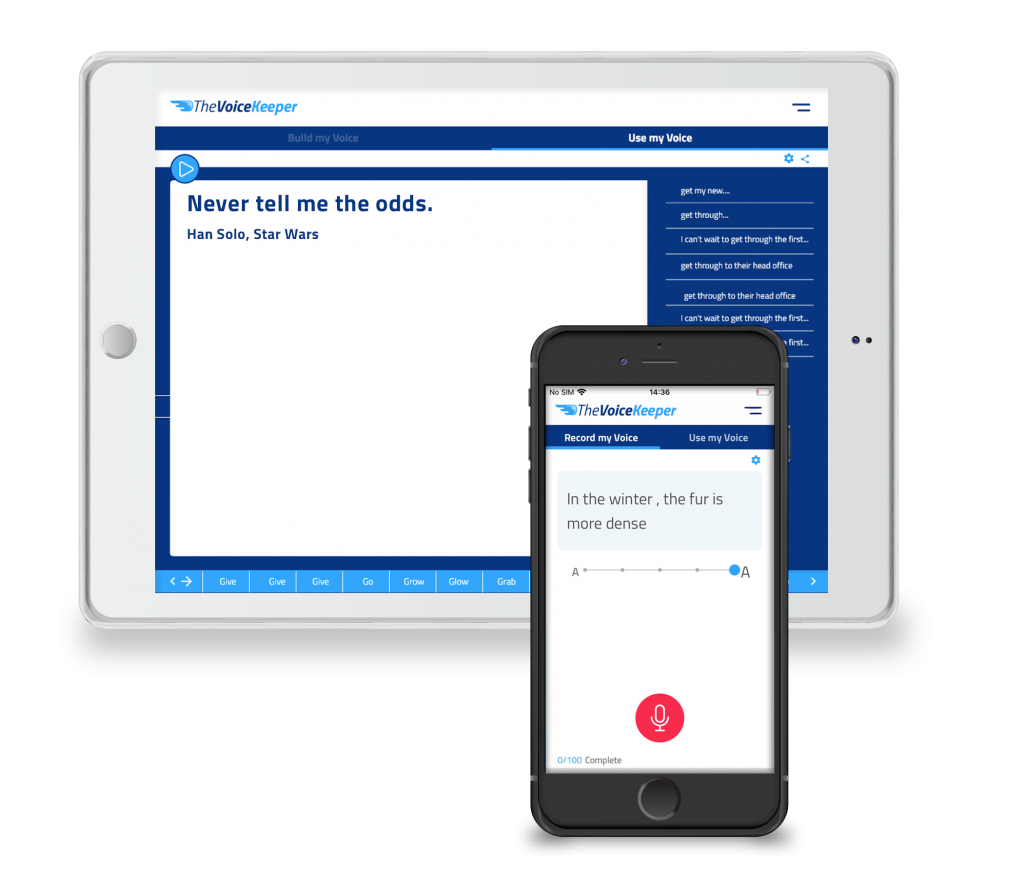One of the many devastating side effects of motor neurone disease, a rare neurological disorder which affects around 1000 people each year just in the UK, is losing the ability to speak. When this happens, innovative technology solutions such as voice banking allow individuals to not only create a personalised digital voice but also help them to preserve a key part of their identity. This voice can then be added to a speech-generating communication device which individuals can use to ‘speak’ in a voice they have an emotional connection with.
Traditional voice banking technology solutions
Traditionally voice banking is done on a computer or a tablet. It often requires external software, a USB microphone headset, setup calibrations and various other set ups. It is also known as a lengthy process as it requires a huge amount of time and investment. Individuals often need to record at least 300-1600 sentences in a quiet space which can take hours or even days to complete.
While voice banking as a concept is not new, developments in AI and deep learning has allowed new innovative solutions to emerge. One such example is The Voice Keeper app, the world’s first voice banking technology solution which allows people to preserve and create a digital voice from the comfort of their mobile phone.
Breakthrough in DNN technology
The technology is based on Deep Neural Networks (DNN) which the company started experimenting with back in 2018. DNNs offers several significant advantages over the traditional synthesis technology that most voice banking solutions currently use. For example, its fast learning capabilities significantly reduces the amount of sentences a person needs to record in order to create a personalised digital voice. Additionally, the networks allow lower sensitivity and reduction of inconsistencies which allows people to create a better-quality voice much faster.
The founder of the company Elik Gurvitz explains: “We recognised how time-consuming and a lengthy process traditional voice banking often is. For this reason, we wanted to create a solution that would allow people to create the first version of their digital voice starting with just 3 minutes of recording material and it is recommended to reach 100 sentences with just additional 7 minutes of recording. Hearing their digital voice almost immediately motivates them to continue recording more. The more they continue recording, the better the engine will become in capturing their voice, unique accent and the way they speak. For some people this might be 300 sentences and for others it can be 500.
We also recognised that recording a huge amount number of sentences can be draining for people with motor neurone disease so we developed a milestone-based system, which allows users can record as little or as much as they want. It’s up to them and each time they reach a milestone of 100 sentences, they receive an updated version of their digital voice. They can then listen to it and decide whether they want to continue recording or are satisfied with the voice they have created.”
Once they are ready to use their new voice, there is a small one-time fee which allows individuals to either use The Voice Keeper app as a text-to-speech platform or another slightly higher fee to move the voice onto another communication device and start communicating with it immediately.
Elik Gurvitz continues: “The reality is that motor neurone disease patients will go through a significant amount of change and pressure soon after their diagnosis so we wanted to create a solution that would help them to capture their vocal identity intuitively from their phone.”
Voice banking is a daunting process as no one wants to think about the possibility of losing their own voice, but it’s a key part of an individual’s personal identity so creating a digital version of it as soon as possible after the diagnosis is a very crucial step every patient should consider. Our aim is to get as many patients to preserve and create a digital voice as possible.
Creating a voice on The Voice Keeper app
The Voice Keeper app is available from the AppStore. Users simply download and register before they are prompted to start reading out loud the basic 30-100 sentences required to get an initial version of their digital voice. Users are able to improve the quality of their voice print by recording for a further 10 minutes, or until they are happy with the recording. The App charges a small one-time fee to allow the user to start using the voice on their communications device.

